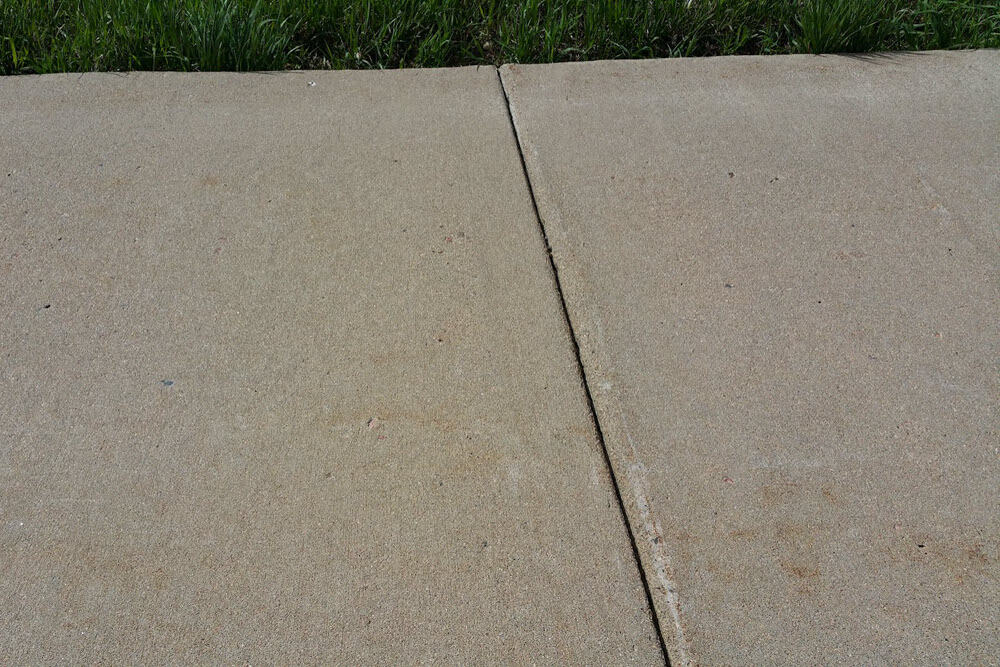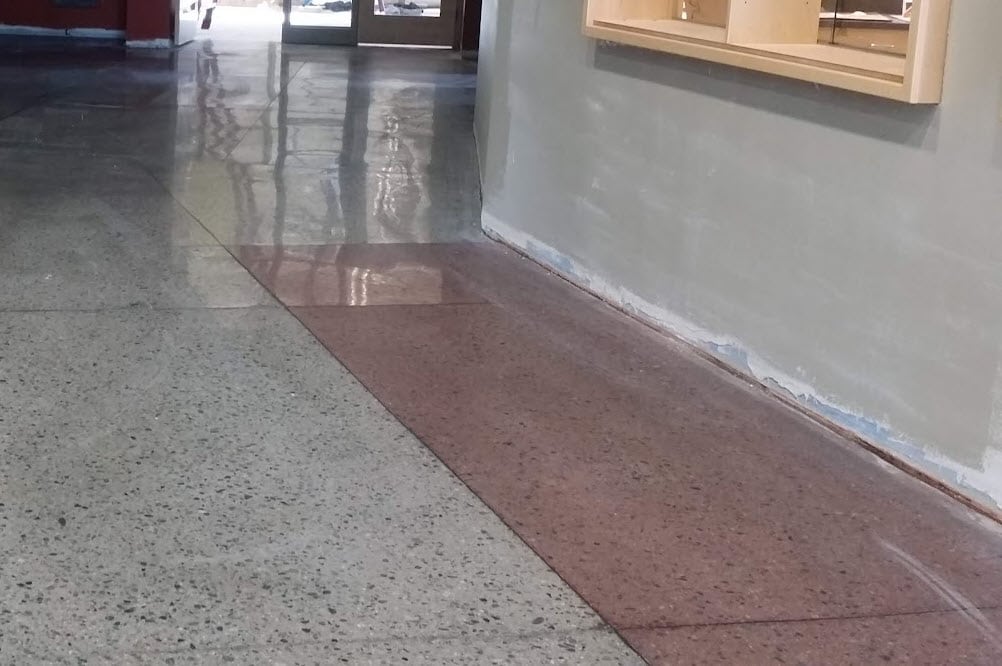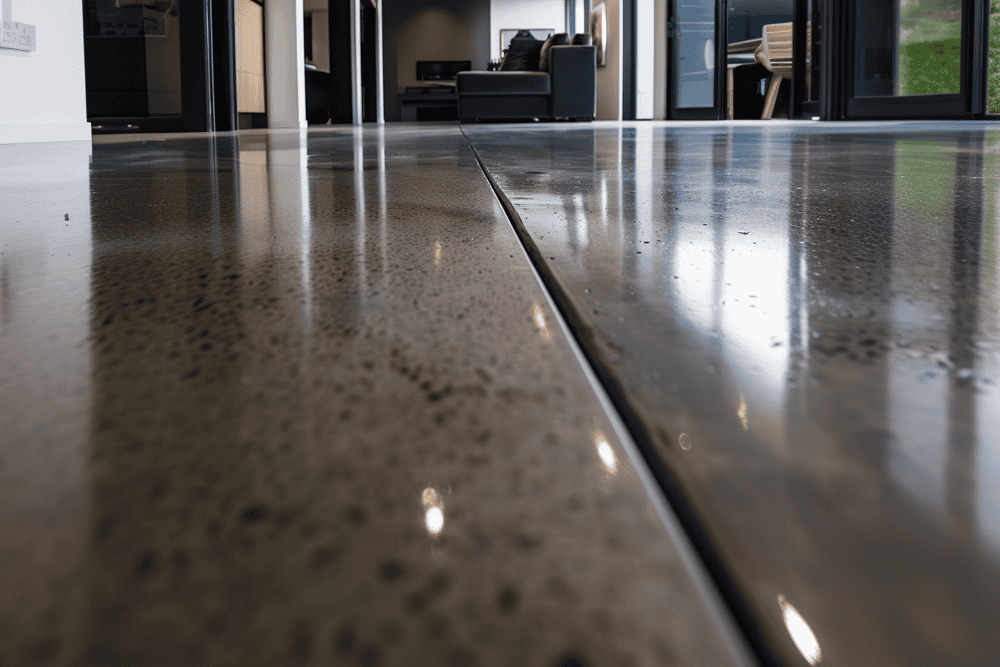Why Polished Concrete Floors Have Joints
Concrete joints play a critical role in the performance and structural integrity of both indoor and outdoor concrete structures – including polished concrete floors. They help manage stress caused by thermal expansion, contraction, and movement. Each type of joint serves a distinct purpose and contributes to the structure’s longevity and maintenance needs.
Types of Concrete Joints
Expansion Joints
Expansion joints accommodate movement due to temperature changes. Designers place these joints in concrete structures to prevent cracks. They typically consist of materials like foam, rubber, or cork, creating a flexible gap that allows concrete elements to expand without causing structural damage.
Expansion Joint Maintenance
Isolation Joints
Isolation joints, designed to completely separate slabs from other elements like walls, columns, or footings, allow movement of the slab independently. These joints help buildings to adapt to movement and prevent stress concentrations that could lead to cracks or damage.
Isolation Joint Usage and Placement
Contraction Joints
Contraction joints, also known as control joints, help manage cracks in concrete. They induce a weakened plane to encourage concrete to crack in a controlled manner as it shrinks. Joint depth and strategic placement are critical for effective contraction joints, thereby preventing random cracking.

This Sidewalk in Highlands Ranch, Colorado has Joints to Protect the Concrete from Extreme Temperature Fluctuations
Construction Joints
Construction joints mark the transition between adjacent sections of concrete slabs. They’re necessary when concrete placement occurs in multiple stages. These joints must ensure load transfer and maintain the alignment of the concrete structure for continued strength and stability.
Cold Joints
Cold joints occur when there’s a delay in concrete pouring, causing a lack of bonding between two concrete layers. These are not planned joints but can be treated with bonding agents to improve the connection and reduce the risk of displacement or structural damage.
Design and Placement

Joints are Clearly Visible in the Polished Concrete (From a Concrete Floor Systems Project for a School in Salida, Colorado)
In concrete construction, precise design and strategic placement of joints ensure structural integrity and performance.
Joint Spacing
Spacing between joints is crucial for controlling where cracks form due to concrete shrinkage and temperature changes. For slabs, American Concrete Institute (ACI) guidelines suggest joint spacing should not exceed 24 to 36 times the slab thickness. This rule helps maintain stability and minimize cracking.
Joint Depth and Dimensions
The depth of joints must equal one-fourth of the slab thickness to effectively control cracking. Correct dimensions allow for expansion and shrinkage movement, while too shallow joints fail to control crack location and too deep joints waste effort and compromise structural support.
Reinforcement and Load Transfer
Joints often feature reinforcing steel or dowels to ensure load transfer across the joint. Dowels must align properly to aid flexural stresses and must possess adequate size and spacing to distribute loads. Aggregate interlock can serve as a natural load transfer method, but it may not suffice in heavy traffic areas.
Materials and Maintenance
Choosing the right materials for concrete joints is crucial for durability and to enhance the lifespan of the structure. Proper maintenance ensures continued protection and functionality of these joints.
Joint Materials and Fillers
Joint Fillers: They often use materials like asphalt-impregnated fiberboard or preformed joint material. Fiberboard is common due to its cost-effectiveness and compressibility. It handles changes in slab dimensions due to temperature shifts. Preformed joint material includes neoprene and plastic, which offer flexibility and resistance to various environmental conditions.
Durability: The joint material directly affects joint durability. High-quality, resilient materials like neoprene or an elastomeric sealant adapt to movement and temperature changes, prolonging joint life.
Sealing and Protection
Sealants: To safeguard joint edges from water and debris infiltration, a quality sealant is key. Elastomeric sealant is a popular choice; it’s a rubber-like material with substantial flex. This ensures a sealed joint even when concrete slabs move.
Maintenance: Regular checks to detect signs of wear or failure in the sealant and filler materials. When maintenance teams spot issues early, they can address them before significant damage occurs, ensuring the joints fulfill their function.
Special Considerations
In designing joints for concrete structures, one must consider factors that influence stress and movement, environmental impacts, and aesthetic choices related to the concrete details.
Stress and Movement Factors
Joints in concrete slabs and structures must accommodate stress from expansion and contraction. The joints’ placement and spacing ensure durability by managing the forces from temperature fluctuations and the concrete’s shrinkage as it cures. They allow sections of concrete to move without causing distress in the entire structure.
Environmental Influences
Climate plays a key role in joint performance – especially for outdoor concrete slabs. Hot weather conditions demand joints that can handle significant expansion, while in colder climates, contraction poses a greater risk. Moreover, temperature extremes call for joint materials robust enough to withstand environmental stress over time.

Both Indoor and Outdoor Concrete Slabs Have Clearly Specified Requirements for Joint Placement
Concrete and Aesthetic Details
For decorative concrete joints, such as in stamped concrete, aesthetics also determine joint depth and placement. These decorative joints serve both a functional and visual purpose, blending seamlessly with the concrete’s pattern while providing necessary space for concrete slab movement.
Frequently Asked Questions
What is the purpose of using expansion joints in concrete structures?
Expansion joints allow for movement due to temperature changes. They prevent cracks by absorbing expansion and contraction of concrete.
How do isolation joints differ from expansion joints in concrete?
Isolation joints separate slabs from other elements, allowing movement in all directions, whereas expansion joints accommodate only expansion.
Why are contraction joints needed in concrete slabs?
Contraction joints help control where cracks occur due to shrinkage as concrete sets and dries, limiting potential damage.
What distinguishes construction joints from other types of concrete joints?
Construction joints mark the end of a pour and the start of a new one, ensuring continuity while allowing some movement.
How are cold joints identified and treated in concrete applications?
Cold joints appear when two concrete pours fail to bond. They often require sealing or additional bonding agents to ensure integrity.